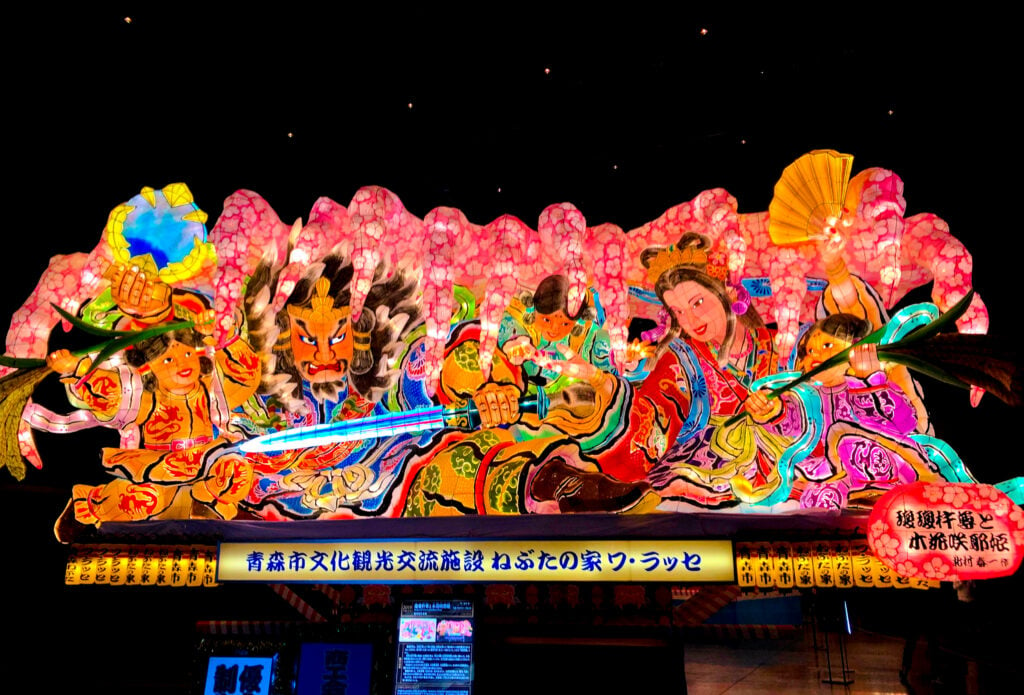Spring is, without a doubt, the most popular time of year in Japan. The weather is warming up, the flowers are starting to bloom, and pastel spring-themed snacks are making their way into cafes and convenience stores. It’s also the perfect time to sit under a cherry blossom tree, have a hanami picnic, and learn or brush up on some Japanese spring vocabulary.
Here are some common Japanese spring vocabulary words you’ll see associated with the season.
春 (Haru)
Spring.
E.g.
春らしくなってきましたね。
Haru rashikunatte kimashita ne.
It’s starting to look like spring.
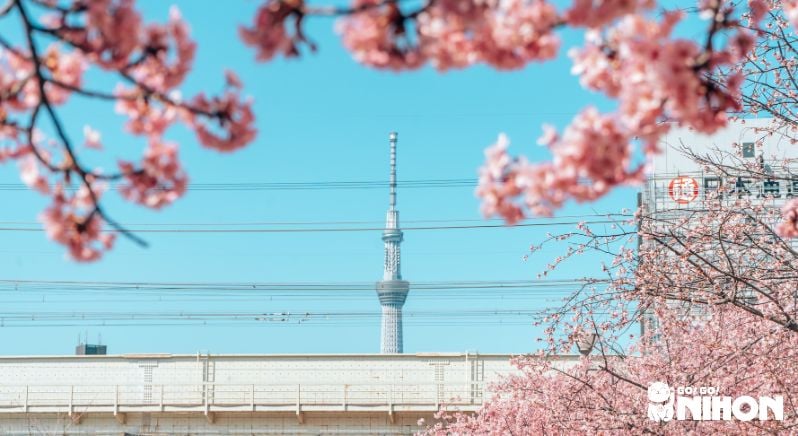
桜 (Sakura)
Cherry blossoms. Maybe the single most common piece of Japanese spring vocabulary you’ll hear this season.
E.g.
桜は本当にきれいですよ。
Sakura wa hontō ni kirei desu yo.
The cherry blossoms are really beautiful.
花 (Hana)
Flower.
Flowers are a huge part of spring in Japan, and there are many festivals celebrating other flowers aside from cherry blossoms.
E.g.
春にはたくさんの花が咲き始めます。
Haru niwa takusan no hana ga sakihajimemasu.
In spring, many flowers start to bloom.
夜桜 (Yozakura)
Cherry blossoms at night.
To maximise the cherry blossom experience, some parks (link in Japanese) offer night-time viewings of sakura where they light up the trees after dark. It offers a completely different vibe to the daytime and a chance for all the night owls to also appreciate cherry blossoms.
E.g.
昨日、仕事の後に夜桜を見に行きました。
Kinō, shigoto no ato ni yozakura wo mini ikimashita.
I went to view cherry blossoms after work last night.

梅 (Ume)
Plum.
Plum is another Japanese spring vocabulary word you will see many places. Plum blossoms commonly bloom around the same time or slightly earlier than cherry blossoms. They might look very similar, but if you look carefully, they don’t have the split at the end of their petals like cherry blossoms do.
E.g.
梅の花は3月に咲きます。
Ume no hana wa sangatsu ni sakimasu.
Plum blossoms bloom in March.
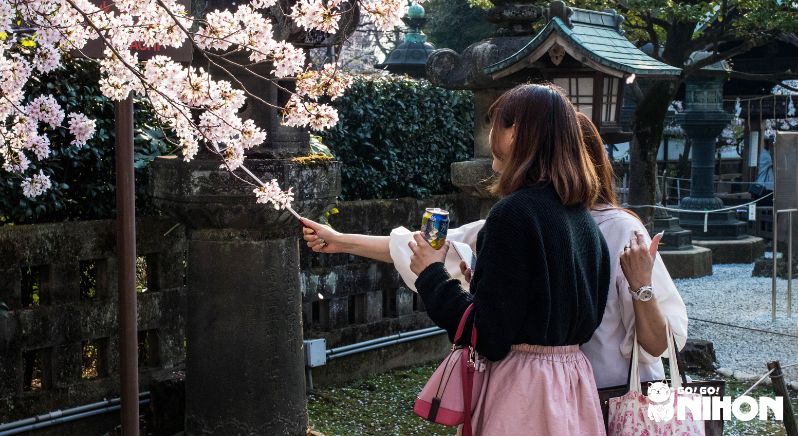
花見 (Hanami)
Flower viewing.
Going to a hanami picnic is a true highlight for anyone experiencing spring in Japan. It’s an extremely popular way to celebrate spring and spend time with friends, family, or colleagues. Top cherry blossom locations are so popular that you’ll need to be quick if you want to get some prime real estate under a blossoming cherry tree!
E.g.
一緒に花見に行きませんか?
Issho ni hanami ni ikimasenka?
Would you like to go flower viewing together?
春の季節 (Haru no kisetsu)
Spring season.
E.g.
春の季節はだいたい3ヶ月間です。
Haru no kisetsu wa daitai san kagetsu kan desu.
The spring season lasts for approximately three months.
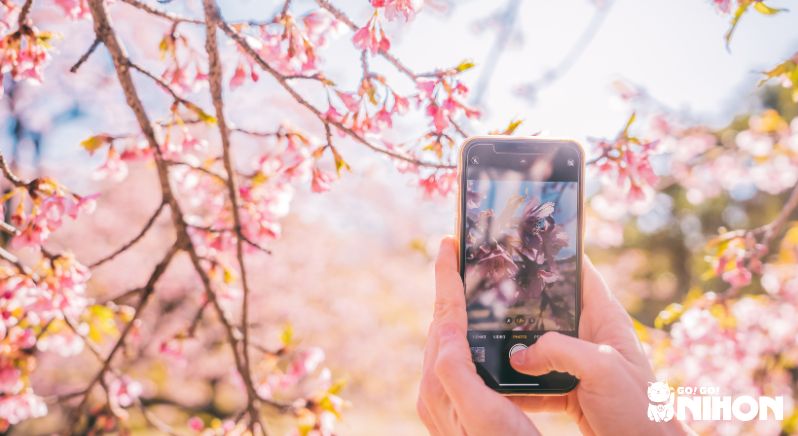
春先 (Harusaki)
Early spring.
E.g.
今日は春先のような天気です。
Kyō wa harusaki no yō na tenki desu.
The weather today is like early spring.
春分 (Shunbun)
Vernal equinox, which is the astrological start of spring. This is celebrated as a public holiday in Japan, as is the Autumnal equinox in September.
E.g.
春分の日は年によって違います。
Shunbun no hi wa toshi ni yotte chigai masu.
The vernal equinox is different depending on the year.
開花予想 (Kaikayosō)
Cherry blossom forecast.
These forecasts are usually shared on the news and internet, detailing when people can expect to see cherry blossoms in full bloom.
E.g.
開花予想によれば, 今年の桜の開花は平年より早くなるところが多いです。
Kaikayosō ni yoreba, kotoshi no sakura no kaika wa heinen yori hayakunaru tokoro ga ōi desu.
According to the cherry blossom forecast, the cherry blossoms will bloom earlier than a normal year in many areas.

満開 (Mankai)
Full bloom.
E.g.
東京では、桜が満開です。
Tokyo dewa, sakura ga mankai desu.
In Tokyo, the cherry blossoms are in full bloom.
桜吹雪 (Sakura fubuki)
Blizzard of falling cherry blossoms.
This Japanese spring vocabulary word is used to describe when the wind blows cherry blossom petals off the trees, making it look almost like pink snow.
E.g.
今日は風が強いので桜吹雪が舞っています。
Kyō wa kaze ga tsuyoi node sakura fubuki ga matte imasu.
The wind is strong today, so a cherry blossom snowstorm is blowing.
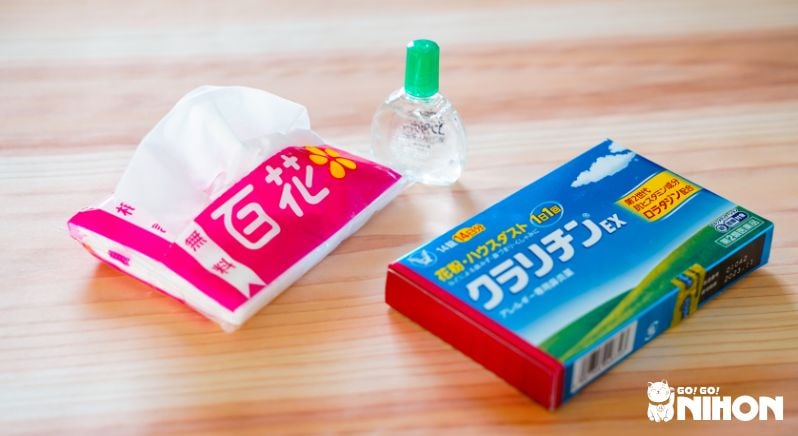
花粉症 (Kafunshō)
Hay fever.
E.g.
私花粉症なんです。
Watashi kafunshō nan desu.
I have hay fever.
Read more about how to deal with hay fever in Japan.
入社式 (Nyūsha shiki)
The entrance ceremony at the company.
Job-hunting for university students begins before they graduate and is known as “shūshoku katsudō 就職活動”, or “shūkatsu 就活” for short. It’s a huge process that results in new graduates starting their jobs all at the same time in April. Therefore, it’s common for companies to hold a ceremony to welcome their new starters, and it’s good Japanese spring vocabulary to learn for international students who want to work in Japan after graduation.
E.g.
今日は入社式です。
Kyō wa nyūsha shiki desu.
Today is the entrance ceremony at my company.
There is also a school version called 入学式 (Nyūgaku shiki) at the start of each school year in April.
新生活 (Shin seikatsu)
A new life.
Spring in Japan is heavily associated with new beginnings, new life, and a fresh start. It’s the start of the new fiscal year and school year, while also bringing in a sense of hope for what’s to come.
E.g.
春から、東京で新生活が始まります。
Haru kara Tokyo de shin seikatsu ga hajimari masu.
My new life will begin in Tokyo this spring.
Learn more about spring in Japan
We love spring in Japan and everything it offers. If you’re interested to learn Japanese in Japan and experience the cherry blossoms and spring season, contact us!
Liked learning Japanese spring vocabulary? Check out other language articles on our blog.


